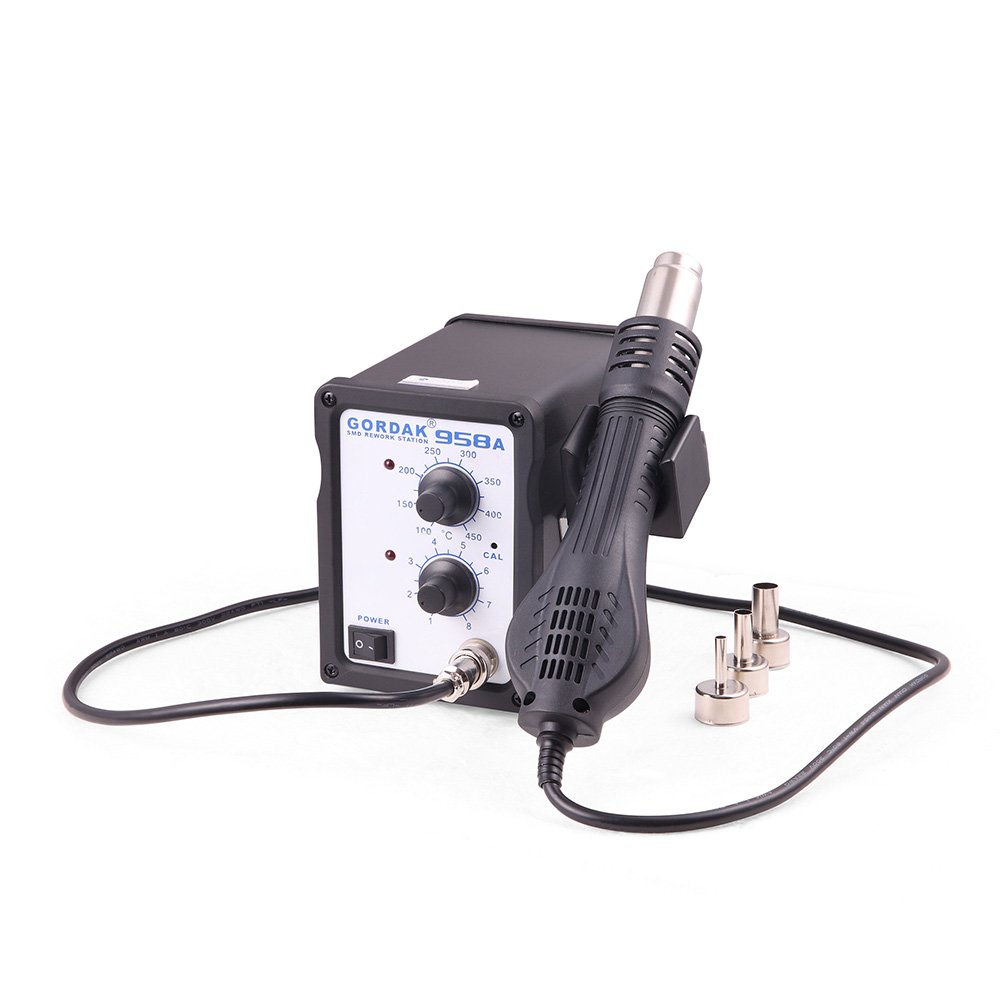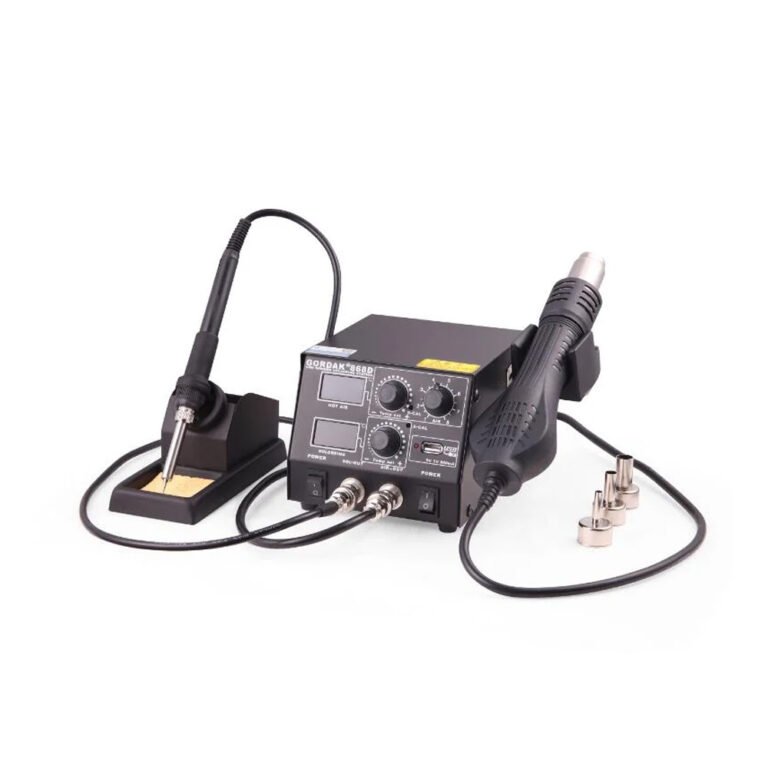Heat shrink tubing is widely used in electrical and electronics work to insulate wires, provide strain relief, and protect solder joints. Traditionally, a heat gun is the tool of choice for shrinking tubing evenly and efficiently. But can a hot air rework station serve the same purpose?
At Gordak Electric, we understand that technicians often look for versatile tools to optimize their workspace. This article explores whether a hot air rework station can be used for heat shrink tubing, its advantages, limitations, and best practices.
Is a Hot Air Rework Station Suitable for Heat Shrink Tubing?
A hot air rework station generates controlled, focused streams of heated air primarily designed for soldering and desoldering surface-mounted components on PCBs. Because of its precise temperature control and adjustable airflow, it can be used to shrink heat shrink tubing—especially in small or delicate applications where a traditional heat gun’s broad airflow might be too intense.
However, there are some important considerations:
- Nozzle size and airflow: Hot air stations typically have smaller nozzles designed for focused heat. For larger tubing, shrinking might be slower compared to a heat gun’s wider nozzle.
- Temperature range: The station’s temperature settings usually suffice to shrink common heat shrink tubing (typically 90°C–200°C), but always confirm your tubing’s specifications.
- Work area size: Hot air rework stations are best for precise, small-area heating rather than broad heat application.

Advantages of Using a Hot Air Rework Station for Heat Shrink Tubing
- Precise temperature and airflow control prevent overheating or damaging sensitive components nearby.
- Focused heating is ideal for shrinking tubing around small connectors or delicate electronics.
- Compact and versatile tool reduces the need for multiple devices on the workbench.
Limitations Compared to a Heat Gun
- Longer shrink time for large or thick tubing due to lower airflow volume.
- Limited coverage area, making it impractical for bulk wiring tasks.
- Potential nozzle compatibility issues if tubing diameter exceeds nozzle size.
Best Practices for Using a Hot Air Rework Station on Heat Shrink Tubing
- Select the appropriate nozzle size to direct airflow evenly around the tubing.
- Set the temperature according to the tubing manufacturer’s recommended shrinking temperature.
- Maintain a safe distance (usually 2–4 cm) from the tubing to avoid overheating.
- Move the nozzle in slow, circular motions to ensure uniform heating and shrinking.
- Avoid direct contact between the nozzle and tubing to prevent melting or burning.

Conclusion
While a hot air rework station is not traditionally marketed as a dedicated tool for heat shrink tubing, it can effectively perform this function for small, precise tasks—especially when working near sensitive electronic components. For larger or general wiring jobs, a dedicated heat gun remains the preferred tool.
If you want to learn more about using Gordak hot air rework stations for heat shrink tubing or other electronics repair applications, or if you need product recommendations and technical support, please feel free to contact us.
Email: info@gordakelec.com
Hot Air Rework Stations
What Is a Hot Air Rework Station and How Does It Work?
Applications of a Hot Air Rework Station: What Can Be Soldered?
Hot Air Soldering for BGA and SMD Repair
Hot Air Rework Station vs. Infrared Rework Station: Pros and Cons
Analog vs. Digital Hot Air Rework Stations: What’s the Difference?
Using a Hot Air Rework Station for Mobile Phone Repairs
Can You Use a Hot Air Rework Station for Heat Shrink Tubing?
Hot Air Reflow Soldering: What It Is and How It Works
Hot Air Rework Station Maintenance Guide
Troubleshooting Common Hot Air Soldering Issues
Tips to Prevent PCB Damage While Using a Hot Air Rework Station
Beginner’s Guide to Using a Hot Air Rework Station Safely
How to Desolder SMD Components Using a Hot Air Rework Station



